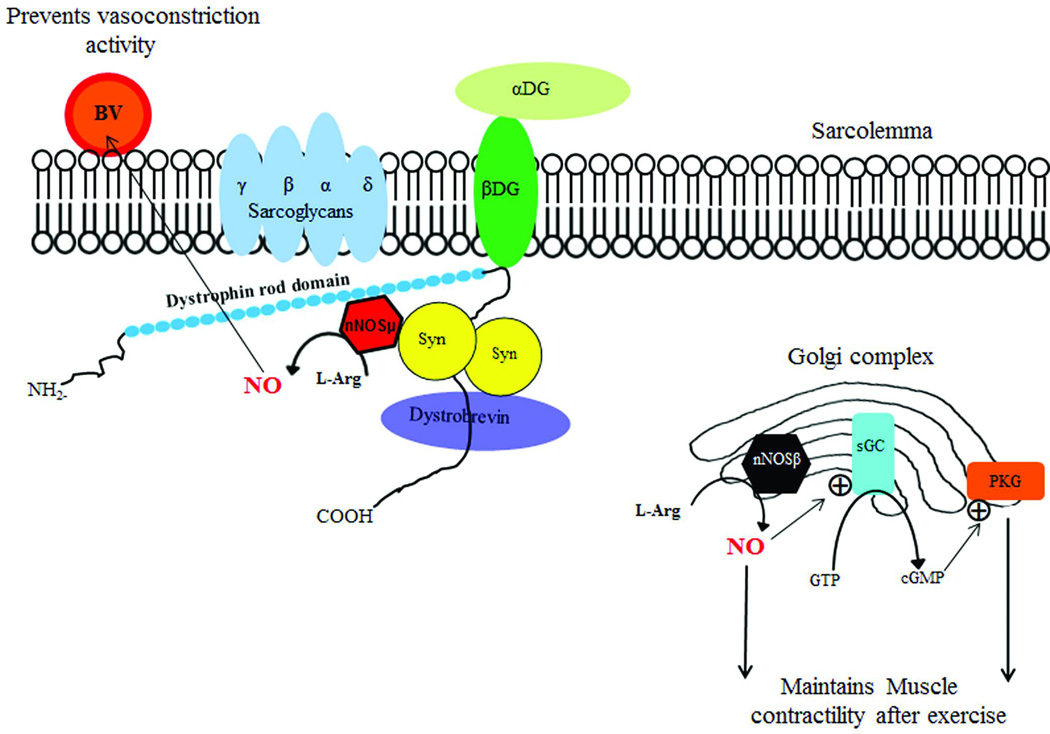Figure 3.
The role of different isoforms of nNOS, namely nNOSµ and nNOSβ in skeletal muscle, is illustrated. Two binding sites of nNOSµ can be seen: at the dystrophin rod domain and at α-syntrophin (a member of dystrophin-glycoprotein complex). NO derived from nNOSµ enhances blood flow to muscle during activity by preventing vasoconstriction of nearby blood vessels during muscle contraction; the increased blood flow is a source of oxygen supply to the muscle during exercise. In contrast, nNOSβ signaling at the Golgi complex regulates force generation during and after exercise generating cGMP dependent protein kinase G (PKG). (Adapted with permission of the American Society for Clinical Investigation from Percival et al. 2010 [117]). Abbreviations: nNOS- nitric oxide synthase; BV-blood vessel; aDG-alpha-dystroglycan; b-DG- beta-dystroglycan; NO- nitric oxide; Syn –syntrophin; GTP- guanosine triphosphate; sGC- soluble guanylyl cyclase; cGMP- cyclic guanosine monophosphate

